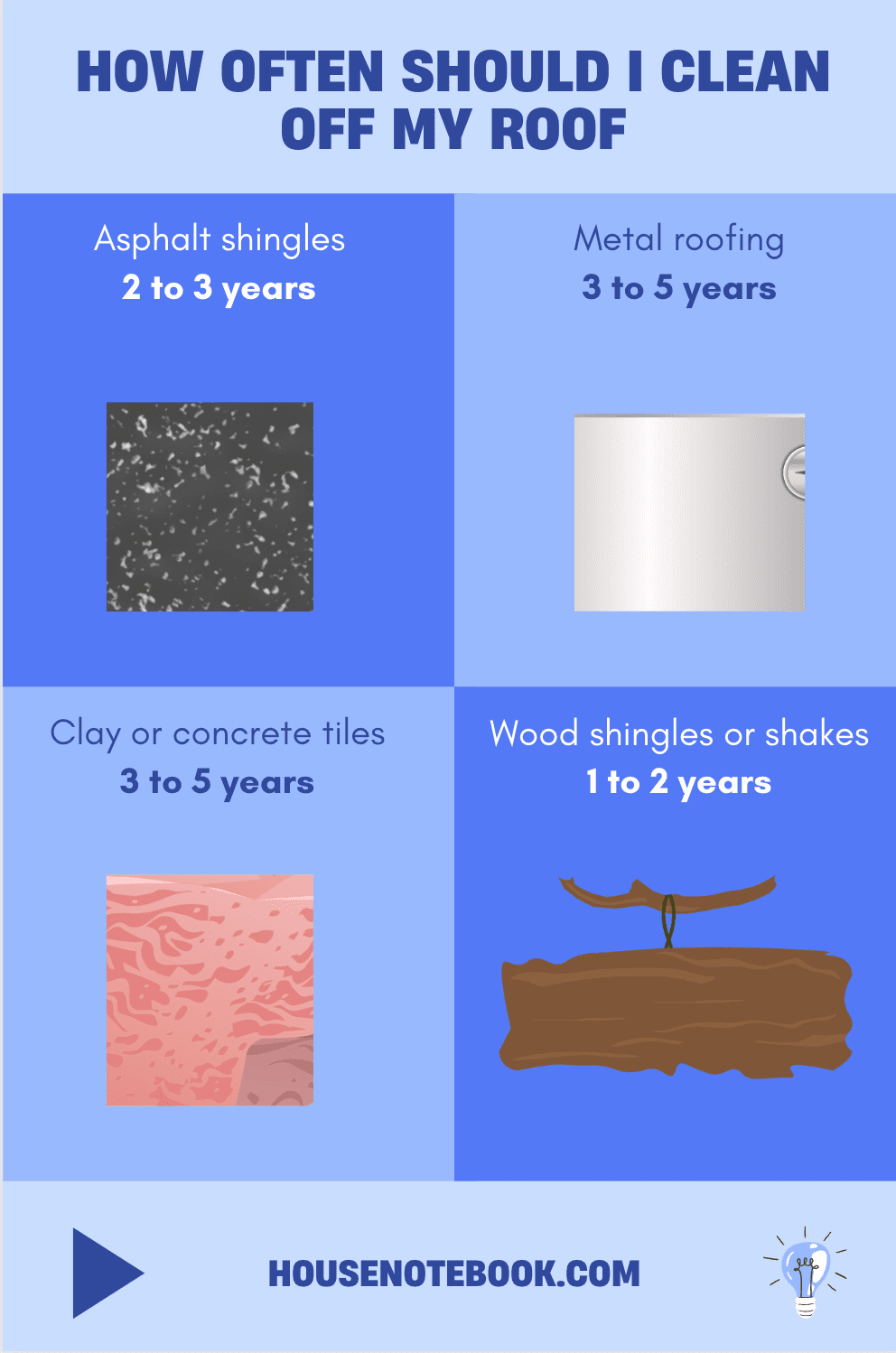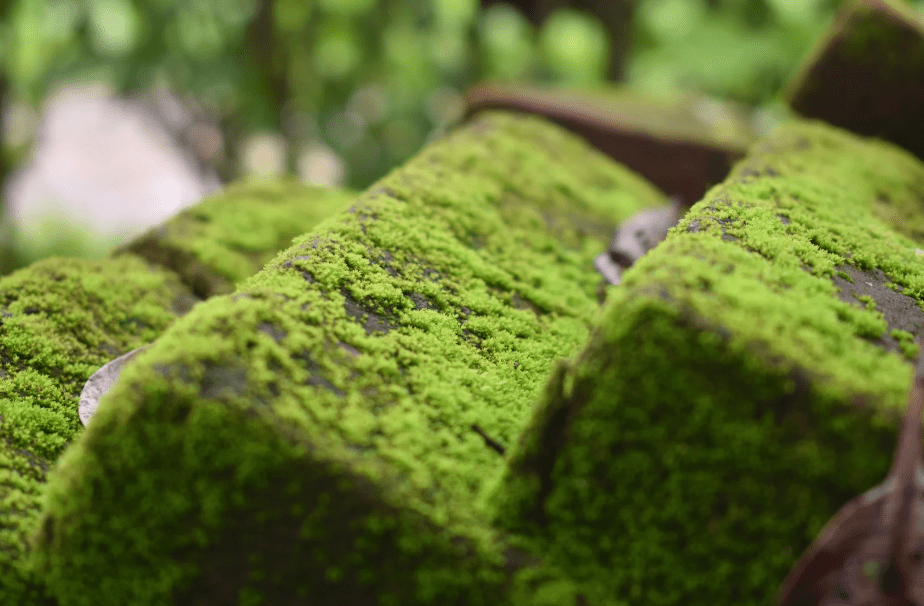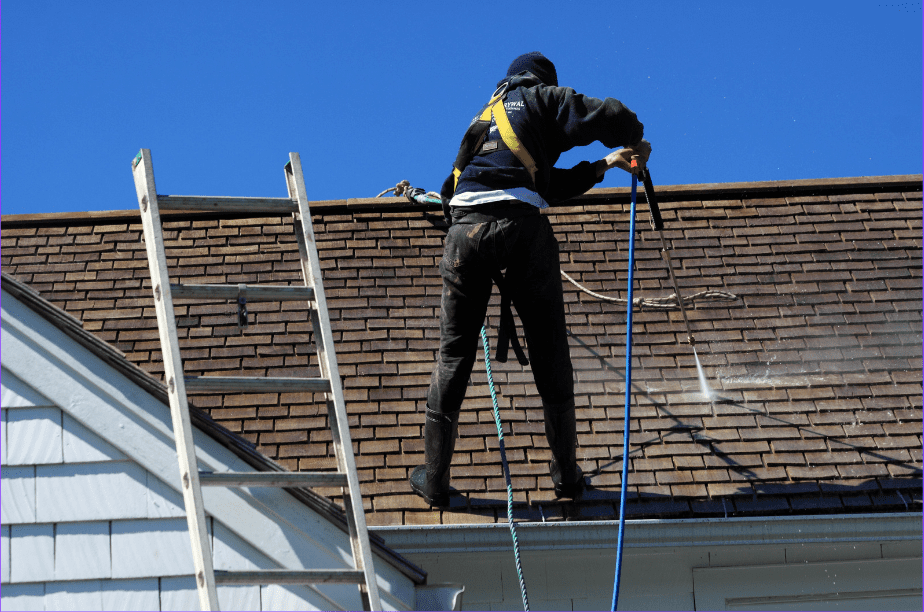A well-maintained roof is vital for safeguarding your home from the elements. Regular cleaning not only boosts curb appeal but also extends the roof’s lifespan. In contrast, a dirty roof can lead to various issues like leaks, structural damage, and reduced energy efficiency. This blog post will delve into the factors influencing how often you should clean your roof, signs it needs cleaning, and effective cleaning methods. Our aim is to equip you with the knowledge needed to keep your roof in excellent condition for years to come.
Factors affecting roof cleaning frequency
Climate and weather conditions
Rainfall and snow
In regions with heavy precipitation, roofs need more frequent cleaning to prevent issues like moss, algae, and debris buildup. Excess moisture also contributes to rot and deterioration of roofing materials.
Wind and storms
High winds and frequent storms can bring dirt, debris, and branches onto your roof, increasing the need for regular cleaning to prevent damage and maintain proper drainage.
Sun exposure
Roofs with direct sunlight exposure may require less frequent cleaning, as the sun naturally inhibits moss and algae growth, while also helping to dry up excess moisture.
Type of roofing material

Asphalt shingles
These popular roofing materials are more prone to algae growth due to their porous nature. Asphalt shingle roofs may need cleaning every two to three years to maintain their appearance and prevent damage.
Metal roofing
Metal roofs are more resistant to moss and algae growth, but they can still accumulate dirt and debris. Cleaning every three to five years is recommended to maintain their appearance and performance.
Clay or concrete tiles
These durable roofing materials often require cleaning every three to five years to remove dirt and maintain their appearance. Regular cleaning also helps ensure proper drainage and prevents water damage.
Wood shingles or shakes
Wood roofs are more susceptible to rot, mildew, and insect infestations. Cleaning every one to two years can help prolong their life and maintain their appearance.
Surrounding environment
Trees and foliage
Roofs near trees or heavy foliage need more frequent cleaning to remove leaves, twigs, and other debris that can trap moisture, promote algae growth, and obstruct proper drainage.
Wildlife and pests
Roofs exposed to bird droppings, nesting pests, or other animal-related issues may require additional cleanings to prevent damage, maintain aesthetics, and address potential health hazards.
Pollution and urban settings
Roofs in urban areas or near sources of pollution may require more frequent cleaning to remove grime, soot, and pollutants that can deteriorate roofing materials and affect your home’s appearance.
Signs your roof needs cleaning

Moss and algae growth
Green or black patches on your roof signal moss or algae presence. Cleaning is necessary to prevent these organisms from lifting shingles, causing leaks, and accelerating roof deterioration.
Accumulation of debris
Leaves, twigs, or dirt on your roof can cause moisture retention, promoting rot and leaks. Regular cleaning helps maintain proper drainage, reduce the risk of damage, and keep your roof looking its best.
Stains and discoloration
Dark streaks or uneven color on your roof may be a result of algae growth, pollution buildup, or rust from metal flashing. Cleaning can restore your roof’s appearance and address underlying issues that may lead to more significant problems.
Damaged or missing shingles
If you notice cracked, curled, or missing shingles, it’s time for a cleaning and inspection. This will help you address potential problems, such as water damage, and maintain your roof’s structural integrity. Regular cleaning can also help extend the life of your shingles by preventing the buildup of damaging substances.
Cleaning methods and precautions
DIY vs. professional cleaning
Homeowners may opt for DIY cleaning to save money, but it can be risky and time-consuming. Professional cleaners have the experience, equipment, and knowledge to clean your roof safely and effectively, ensuring the best results.
Pressure washing and soft washing
Pressure washing uses high-pressure water to remove dirt, debris, and algae from your roof. However, it can damage delicate materials. Soft washing, on the other hand, involves low-pressure water combined with specialized cleaning solutions, making it a gentler option for certain roofing materials.
Chemical treatments and eco-friendly options
Traditional chemical treatments can effectively remove algae, moss, and stains, but they may harm the environment or damage plants. Eco-friendly alternatives are available for those seeking environmentally responsible options. These products use biodegradable ingredients and minimize the impact on the surrounding ecosystem.
Safety measures and precautions
Roof cleaning can be dangerous, so it’s essential to prioritize safety. Wear appropriate safety gear, such as non-slip shoes, gloves, and safety glasses. Use a sturdy ladder with a stabilizer and have a spotter to assist you. Avoid working in inclement weather or when the roof is wet or slippery, as this increases the risk of accidents.
The video below shows a timelapse and instructions on how to clean a roof by a professional.
Preventative measures to keep your roof clean
Regular inspection and maintenance
Schedule routine roof inspections and maintenance to spot potential issues early, address minor problems, and keep your roof clean and in good condition.
Gutter cleaning and maintenance
Clean gutters regularly to prevent water overflow, which can cause roof damage and promote moss or algae growth. Ensure gutters are securely attached and free of debris.
Trim overhanging branches and foliage
Keep tree limbs and foliage away from your roof to minimize debris, reduce shade that encourages moss growth, and prevent potential damage from falling branches.
Install zinc or copper strips
Installing zinc or copper strips near the roof’s peak can help prevent algae and moss growth. Rainwater washes metal ions over the roof, creating an environment inhospitable to these organisms.
==>Perhaps you would like to know how flat roofs drain.
Conclusion
Roof cleaning is essential for maintaining your home’s appearance, protecting it from damage, and extending its lifespan. Neglecting this aspect of maintenance can lead to costly repairs and reduced energy efficiency.
Consider factors like climate, roofing material, and surrounding environment to tailor cleaning frequency to your specific needs. Regular inspections can help you stay on top of potential issues and keep your roof in peak condition.
Prioritize roof maintenance for long-term benefits, and don’t hesitate to seek professional help when needed. By investing time and effort into your roof’s upkeep, you’ll enjoy a cleaner, safer, and more durable home for years to come.
Video Version of the Blog Post
We have created a video version for this blog post. If you like this video, consider subscribing to the House Notebook Youtube Channel.

